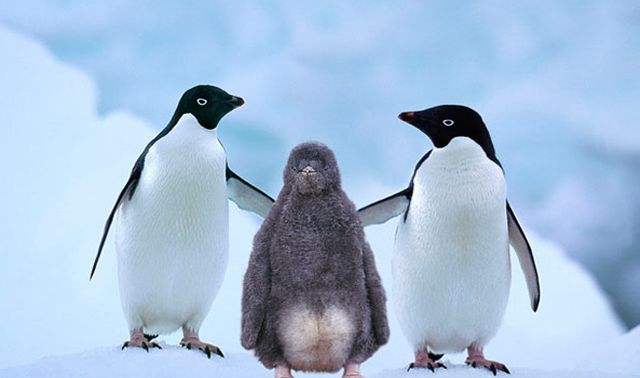Adélie penguin
IUCN
LCBasic Information
Scientific classification
- name:Adélie penguin
- Scientific Name:Pygoscelis adeliae
- Outline:Waterfowl
- Family:Sphenisciformes Spheniscidae Pygoscelis
Vital signs
- length:46-75cm
- Weight:4-6kg
- lifetime:16~20 year
Feature
The Adelie penguin's tail is slightly longer than other penguin species.
Distribution and Habitat
Distributed in Antarctica, South Georgia Island and the South Sandwich Islands. .
Migratory bird: Argentina, Australia, Falkland Islands, Heard Island and McDonald Islands, New Zealand.
Surrounding the coast of Antarctica and nearby islands, they spend the winter in the ocean. In winter, they often appear in groups on floating ice or icebergs, and return to their land habitats in spring.
Appearance
The Adélie penguin is 46-75 cm long and weighs 4-6 kg. It has white eye circles, a blue-green head, a black beak with slender feathers at the corners of the beak, short legs and black claws. The feathers are composed of black and white. Their heads, backs, tails, backs of wings and lower jaws are black, and the rest are white. It is a highly skilled swimmer with a maximum speed of 70 kilometers per hour.
The forelimbs develop into flippers, which are suitable for paddling. It has scaly feathers, with a wide and short feather shaft, narrow and dense feathers, and is evenly distributed on the body surface. The bones are heavy and not inflated, and the sternum has a well-developed keel protrusion containing fatty bone marrow. The tail feathers are short. The tarsus is short and moved to the back of the body. There is a web between the tarsus. The horny part of the upper mouth is composed of 3-5 horny plates. The surface of the tongue is covered with nail-like papillae, which is suitabl
Details
The legs of the Adélie penguin are light pink and the soles of the feet are black. Like other penguins, the Adélie penguin is also a good swimmer, and can swim at a speed of up to 15 kilometers per hour. Normally, it swims at a speed of 4-7 kilometers per hour. When the Adélie penguin swims fast, it can jump up to 2 meters to the shore to escape the predation of seals. They usually dive to the seabed at about 45 meters to find food, and occasionally dive to 175 meters, and the diving time is about 1.5 minutes.

Adelie penguins cannot fly, but are good at swimming and diving, and walk with a swaying motion. They can slide on the ice with their abdomens attached. They feed on various fish, mollusks and crustaceans. When the breeding season ends and the water begins to freeze, the Adelie penguins are ready to leave. But there is a natural enemy under the ice floes - the ringed seal. The penguins are waiting for who will jump first. When one penguin jumps, the other penguins also jump quickly, because choosing the right time is crucial. Then jump on the ice floe, so that they can leave safely and slowly, because the ringed seals on the ice are not a threat. When going on the ice floe, a small number of penguins will be caught, and the ringed seals will leave with their prey, and the other penguins will have time to jump on the ice floe.
Adélie penguins may meet emperor penguin chicks on their way to the sea. Adélie penguins will have three behaviors. First, become reinforcements escorted by emperor penguin chicks. Second, attack the emperor penguin chicks without hesitation, drive them into the sea, and make a space (on the edge). When attacking, other Adélie penguins will join. Third, help first and then drive the emperor penguin chicks into the sea.
Adélie penguins are monogamous during the breeding season, and the mate relationship is very strong. Usually they have the same mate every year (except for one that does not return to the breeding ground)
Listed in the IUCN Red List of Near Threatened Species - Least Concern (LC).
Protect wild animals and eliminate game.
Maintaining ecological balance is everyone's responsibility!








